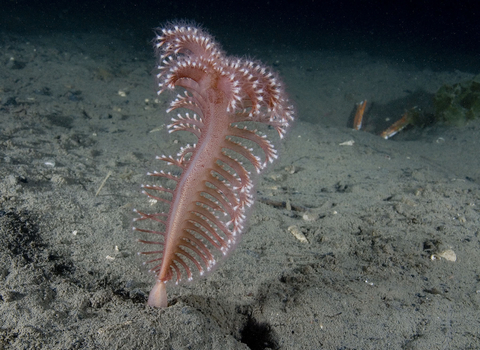
Phosphorescent sea pen ©Paul Naylor www.marinephoto.co.uk
Phosphorescent sea pen
This colonial creature looks like an old-fashioned quill - that's where the name sea pen comes from.
Scientific name
Pennatula phosphoreaWhen to see
January to DecemberSpecies information
Category
Statistics
Height: Up to 40cmSea pens and burrowing megafauna communities are featured on the OSPAR List of Threatened and/or Declining Species and Habitats (Region II – North Sea, Region III – Celtic Sea) and are a Feature of Conservation Importance for which Marine Conservation Zones can be designated.
